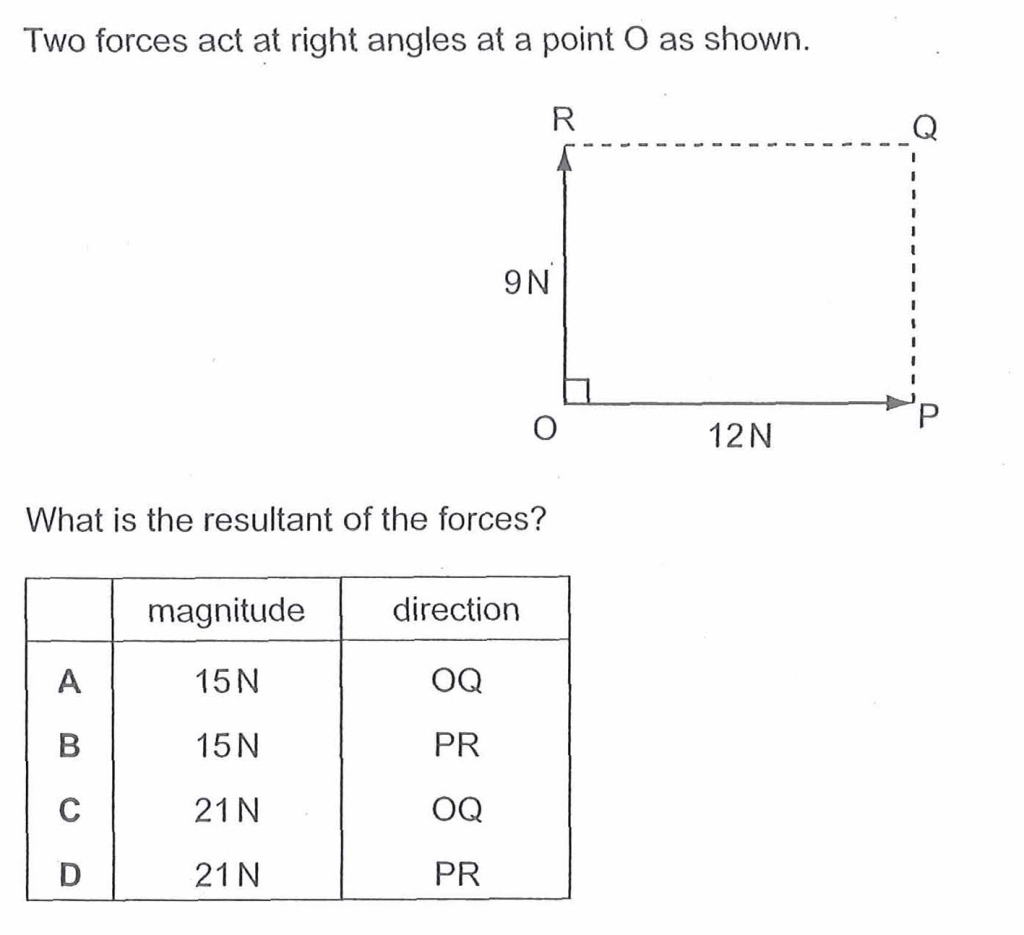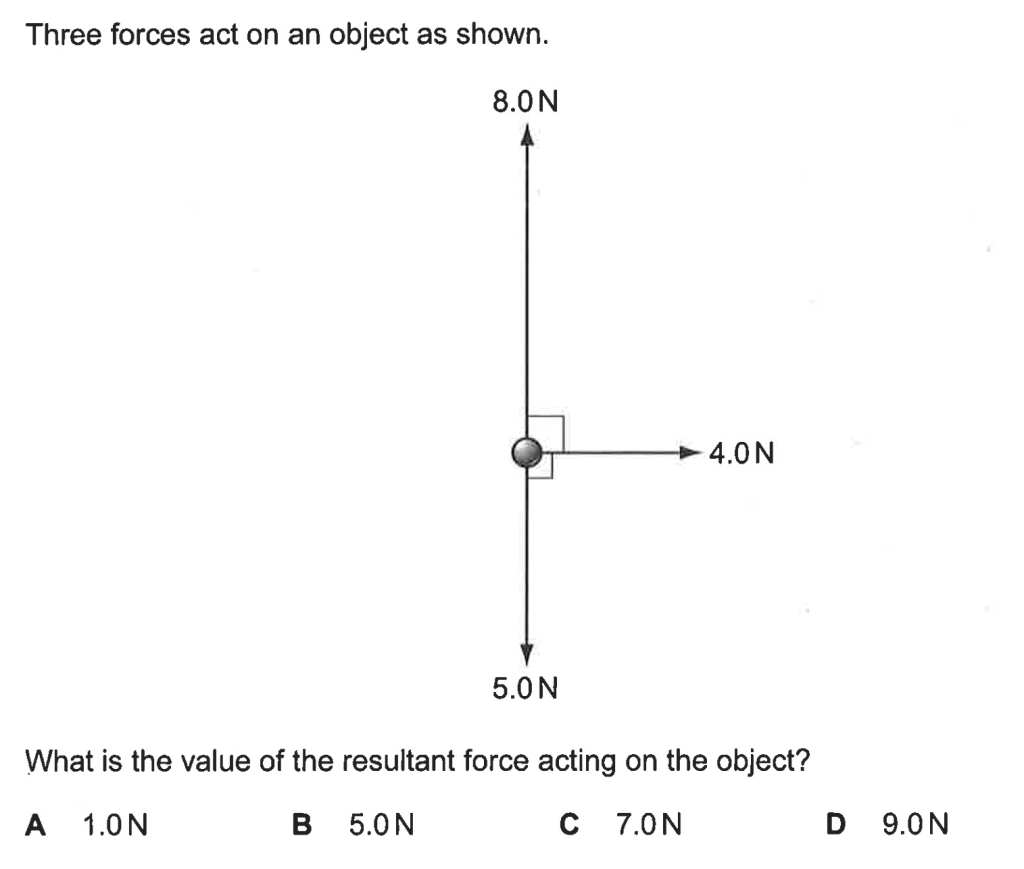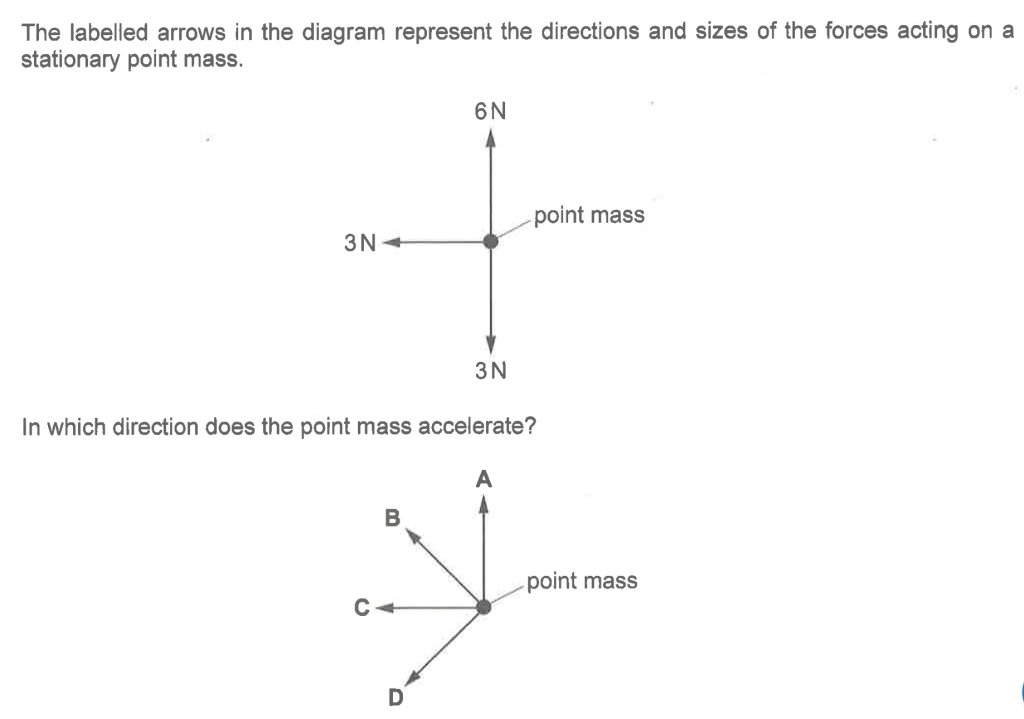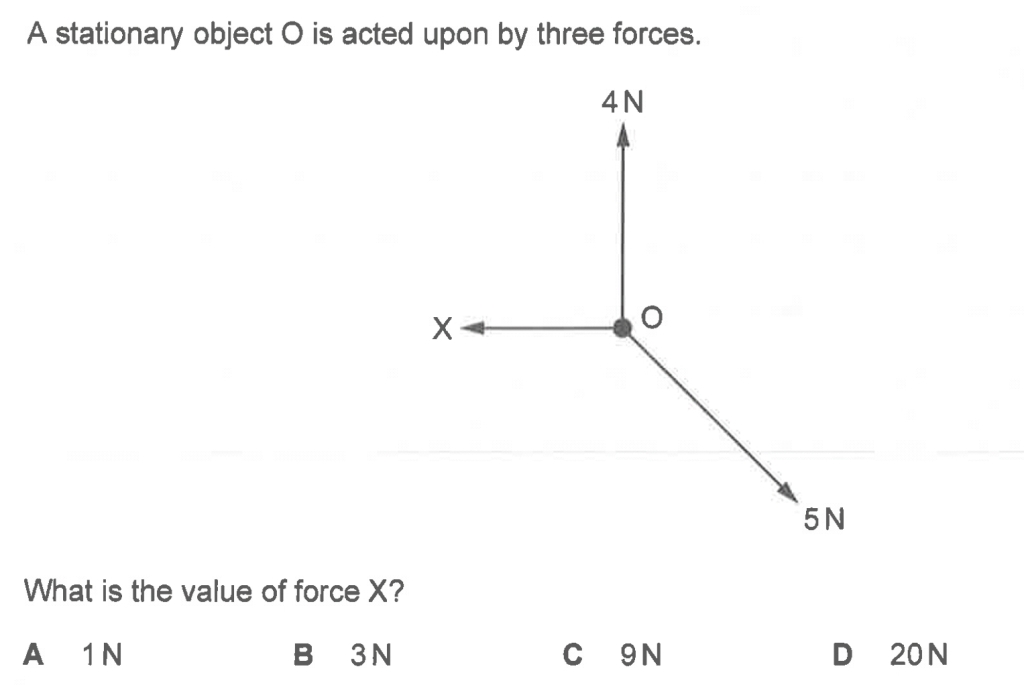Below are the questions.

2003PPq1q7 (0 min to 2.42 min) Ans: Option A

2023PPp1q4 (2.47 min 3.54 min) Ans: Option C

2018PPp1q2 (3.45 min to 6.22 min) Ans: Option D

2011PPp1q6, 2016PPp1q6 (6.22 min) Ans: Option A

Below are some examples of questions that involve finding the resultant force due to two or three forces.


2010PPp1q2 similar to 2002PPp1q7 (0s to 3.02 min) Ans: Option D and D respectively

2005PPp1q10, 2012SPp1q1, 2018PPp1q2 (4.25 min to 6.40 min) ANs: Option A

2014PPp1q8 (6.40 min to 7.48 min) Ans: Option B

2019PPp1q2 (7.48 min to 8.22 min) Ans: Option B

2020PPq1q3 (8.22 min to end) Ans: Option B
The precision of ruler or measuring tape is 0.1 cm.
The precision of vernier caliper is 0.01 cm
The precision of micrometer screw gauge is 0.01 mm
This video will show you how to use a actual vernier caliper.
This video will guide you in reading the vernier caliper.
This video will show you how to use a actual micrometer screw gauge.
This video will guide you in reading the micrometer screw gauge.
Prefixes are used to simplify the writing of very big or very small numbers.
For instance, instead of having to write 12 500 000 m every time, you can simplify it by using the prefix mega (M), hence it can also be written as 12.5 Mm. Similarly, 0.00054 s can be written as 0.54 ms.

If you are unsure or confused with the unit conversions, you can refer to the following videos.
1) Prefixes can be used for different physical quantities units.
2) Unit conversion with examples
3) Unit conversion for units of area and volume
4) Unit conversion for units of speed and density


In this post, we will be going to the basics of setting up the retort stand and pendulum experiment. Most probably, this will be the first experiment which you will perform in the lab. Let’s start with the setting up the retort stand, boss and the clamp.
Next we will take a look at how you set the up the apparatus for the pendulum experiment.
How is the period affected by length, mass of bob, and angle of release? Click on this post to find out more.
Click here to see how to use a digital stopwatch.

Basic Concepts of the pendulum:
Refer to this post for the factors that affect the period of the pendulum
Period, T, is the time taken for one complete oscillation.
The period T of a pendulum is affected by the following factors.
1) the length of the pendulum:
– the longer the length, the longer the period (i.e. swing slower)
2) the gravitational field strength, g
– the greater the g, the shorter the period (i.e. swing faster)
(e.g. the g on earth is 10 N/kg while that on the moon is 1.6 N/kg, hence the period on the moon will be longer)
NOTE: (common misconceptions)
Period, T, of the pendulum is NOT affected by
1) the angle of release (as long as the angle of release is between 10 to 15 degrees)
(if the angle of release is small, the swing will not be fast and air resistance will not be significant)
2) the mass of the pendulum ball
Refer to the video below for the demonstration of the above concepts.
Pendulum: Displacement-time vs KE-time graphs
How to set up the pendulum experiment?
Click here to view the video
For Combined Science (Physics), drawing of vector diagram is a must.
In general, two known forces are given and the resultant force of these two forces is to be found using the vector diagram.
There are two methods to draw vector diagram 1) Parallelogram method and 2) Tip-to-tail method. In this post, the parallelogram method is used.
Example 02
Example 03
Example 04
Click here to view another post on Closed-Loop Triangle Method (2 forces, 2 unknowns, 1 known)
Click here to view how parallelogram method is applied to various kind of questions
Vernier caliper and micrometer screw gauge are used to measure length.
Vernier caliper is used in general for measuring length between 0 to 15 cm.
Micrometer screw gauge is used in general for measuring length between 0 to 2.5 mm.
The accuracy (precision) of
– ruler (0.1 cm)
– vernier caliper (0.01 cm)
– micrometer screw gauge (0.01 mm)
Prefixes are used to denote very large or small physical quantities.
It is important that you know all these prefixes well.
Density is the mass per unit volume.
Common units for density are g/cm3 or kg/m3. SI unit is kg/m3.
Density of a pure substance is fixed, regardless of it’s size!

Floating and Sinking
A denser (heavier) substance will sink in liquid which is less denser (lighter).
A less dense substance will float in a liquid which is denser.
If substance has the same density as the liquid, it will be suspended in the liquid.
Usain Bolt smashed the 100m and 200m World record with a time of 9.58 s and 19.19s respectively in Berlin 2009! Can’t embed the 100m clip here. So just how fast is he? Is he much faster than your dad’s car on the expressway 90 km/h???
100m in 9.58s means approx. 10.44 m/s = 37.58 km/h. So well, 2 legs are slower than 4 wheels =) How do you convert?
View the step by step conversion from m/s to km/h. (in short, multiply by 3.6)
Below is another record set by him. 200m in 19.19s. You can try to do the conversion!
Physical Quantity is a quantity that can be measured and it consists of a numerical magnitude (size) and a unit. (e.g. 5m where 5 is the numerical magnitude and m is the unit)
1) The seven base quantities and their SI units
| Base Quantity | Name of SI unit | Symbol for SI unit |
| Length | metre | m |
| Mass | kilogram | kg |
| Time | second | s |
| Electric Current | ampere | A |
| Thermodynamic temperature | kelvin | K |
| Luminous intensity | candela | cd |
| Amount of substance | mole | mol |
Out of the seven, for O level Physics, you are required to learn the first 5 (length, mass, time, current and temperature).
2) Some common derived quantities and units
| Physical Quantity | How it is derived from base quantities | Symbol for SI unit |
| Area | length x width | m2 |
| Volume | length x width x height | m3 |
| Speed | length/time | m/s |
| Acceleration | velocity/time | m/s2 |
| Density | mass/volume | kg/m3 |
You can think of base quantities as the smallest building blocks (like Lego bricks). When you combined any base quantities to ‘build’ into something else, they becomes a derived quantity.The derived quantity is ‘derived’ or ‘gotten from’ when 2 or more quantities are combined together.
3) Prefixes for SI unitsPrefixes are used to represent very large or small quantities.For example, instead of writing 1000000 m, it will be more convenient to write 1Mm, which means the same thing!
| Factor | Prefix | Symbol |
| 109 | giga- | G |
| 106 | mega- | M |
| 103 | kilo- | k |
| 10-1 | deci- | d |
| 10-2 | centi- | c |
| 10-3 | milli- | m |
| 10-6 | micro- | µ |
| 10-9 | nano- | n |